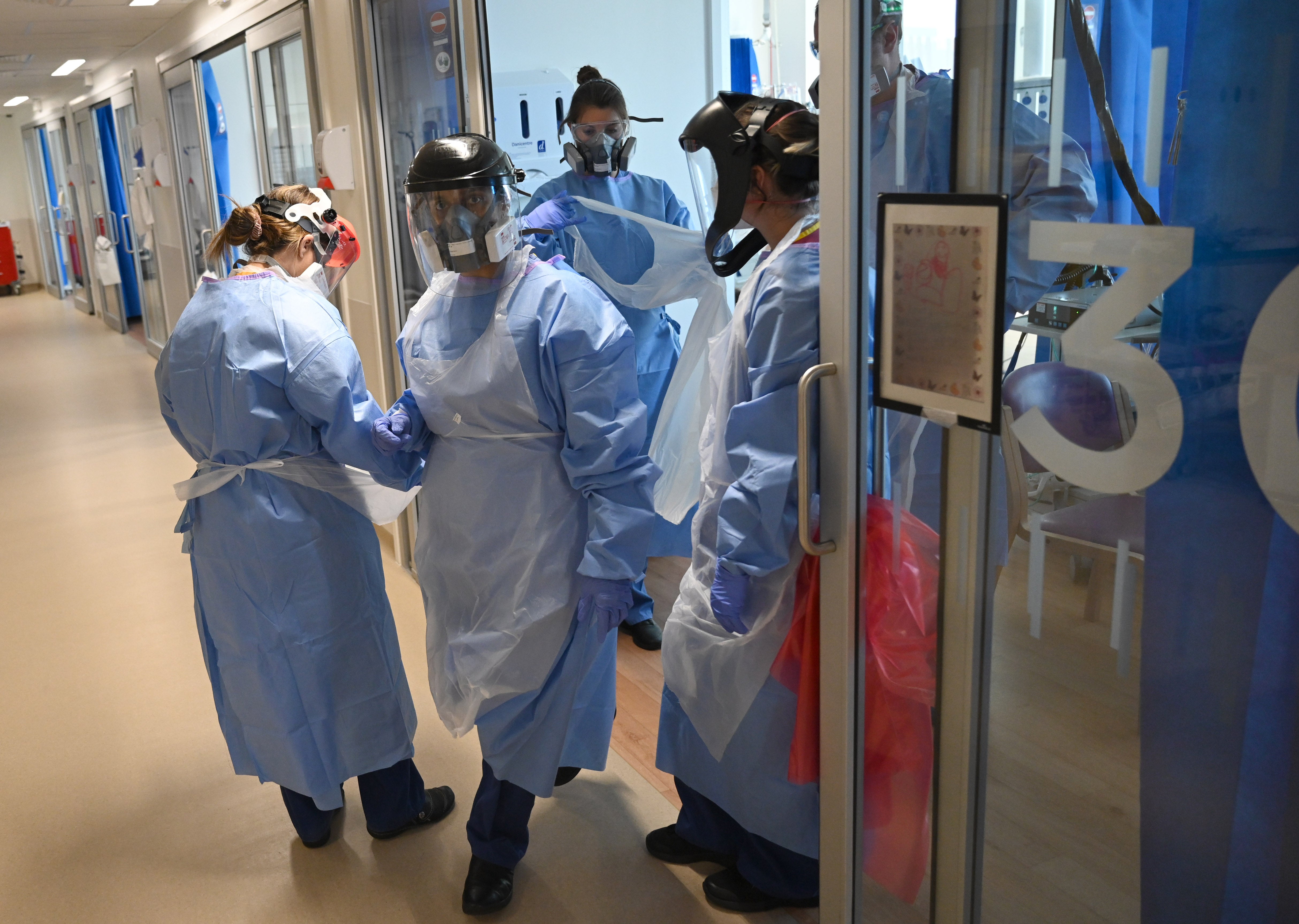NHS waiting lists could soar beyond 15 million in wake of pandemic, study warns
Reigning in the backlog of cases could require extra capacity costing £2bn a year

NHS waiting lists could reach 15 million or higher in the wake of Covid-19, and could remain on an “ever-rising trajectory” unless the capacity of the health service is boosted above pre-pandemic levels, a new report has warned.
Even on the most optimistic scenarios, returning the waiting list to pre-pandemic levels by 2025 could cost the NHS an additional £2bn a year, placing a heavy demand on chancellor Rishi Sunak as he draws up plans for government expenditure in this autumn’s Spending Review, said the Institute for Fiscal Studies.
Health secretary Sajid Javid shocked many last month with a warning that waiting lists could more than double from the current 5.3 million to hit 13 million by the end of the year, as many patients who have stayed away from hospitals during the pandemic come forward for treatment.
But today’s IFS report found that Mr Javid’s forecast was “well within the realms of possibility”.
And experts from the independent economic think tank said modelling suggested the backlog could rise beyond that level unless NHS capacity is boosted significantly above 2019 levels in what will be “a major and pressing challenge” for Mr Javid and new NHS chief executive Amanda Pritchard.
NHS waiting lists have grown by just a million so far during the pandemic, despite there being three million fewer planned admissions and 17 million fewer outpatient appointments in the first 10 months alone. An estimated 7.4 million fewer people joined the backlog between March 2020 and May 2021 than would otherwise have been expected.
Today’s report found that the “remarkably small” increase in the waiting list may have been due to a fall in accidents and injuries resulting from lockdown, changes in doctors’ referral practices or patients avoiding healthcare either out of fear of infection or a desire not to overburden the NHS.
But at 5.3 million, the waiting list is already the longest it has been since the current definition was introduced in 2007 and more than twice the January 2009 figure of 2.3 million, when it was at its shortest.
The key to the NHS’s immediate future will depend on how many of the 7.4 million “missing” patients now seek treatment, and how many have received private treatment, recovered, died or learned to live with their conditions in the interim.
“Sir Simon Stevens, the outgoing NHS England chief executive, has suggested that with the right resources the backlog could be cleared over the next two-and-a-half to three years,” said the IFS report. “Our analysis shows that achieving this would require the NHS to find effective ways to boost its capacity. If that cannot be done, clearing the backlog will take even longer.”
The report analysed four scenarios of varying seriousness for the waiting list.
Under the worst case analysed, some 80 per cent of the missing patients would return over the next year, while the NHS would operate at just 90 per cent of pre-pandemic capacity this year, returning to 100 per cent from 2023. The IFS calculated that this would result in waiting lists soaring to 14 million by the autumn of 2022 and continuing to climb in the following years.
If just 65 per cent of the missing patients present for treatment, and the NHS operates in future at 95 per cent of pre-pandemic capacity, waiting lists would still rise to an enormous 11 million within a year and then continue to climb “worryingly” upwards to more than 15 million by the end of 2025, the report warned.
Only if pre-pandemic capacity is outstripped does the IFS modelling suggest the waiting list can be returned to a downward trajectory.
If the NHS can return to its full 2019 capacity this year and next, and add an additional 5 per cent from 2023 onwards, then even with 75 per cent of the missing patients coming forward for treatment, waiting lists would rise temporarily before falling back to 8.6 million – almost double its pre-pandemic level – by 2025.
This would require treating an additional 800,000 patients a year at an annual cost of at least £1bn, said the IFS.
In the best-case scenario, the NHS would increase capacity by 5 per cent above 2019 levels this year and next, and 10 per cent from 2023 onwards, treating an extra 1.6 million patients a year at a potential annual cost of at least £2bn. The IFS calculated that this model would see waiting lists peak at more than 9 million in 2022 before returning to pre-pandemic levels in 2025.
IFS research economist Max Warner, an author of the study, said: “More than four million people were on an NHS waiting list even before the pandemic. Covid-19 has only made matters worse, as millions of people have missed out on treatment and millions more haven’t even been referred onto the waiting list to begin with.
“There is a real risk that if the NHS cannot find effective ways to boost its capacity – a challenge at the best of times, let alone after a major pandemic – then much longer waiting lists will be with us for years to come.”
The study found that there has been a particularly sharp increase in the number of people waiting for longer than a year. On the eve of the pandemic in February 2020, only around 1,600 people had been on the list for a year or longer. By May 2021, this had increased to almost 340,000 – down from the March 2021 figure of 436,000, but still a 200-fold increase on pre-pandemic levels.
Join our commenting forum
Join thought-provoking conversations, follow other Independent readers and see their replies
Comments